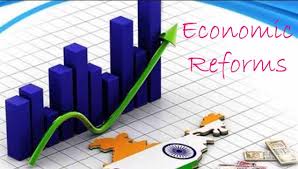19 August 2025 The Hindu Editorial
What to Read in The Hindu Editorial( Topic and Syllabus wise)
Editorial 1: Required reforms
Context
Sacrificing a portion of revenue to increase consumption can strengthen the economy.
Introduction
The central government’s proposed GST reforms are bold, timely, and aimed at benefiting the middle class and businesses. By rationalising tax slabs, reducing rates, and simplifying procedures like registration, returns, and refunds, the government seeks to ease the tax burden, curb evasion, and make the system more efficient, marking 2025 as a pivotal year for tax reform.
Bold and Timely GST Reforms
- The central government’s proposals to reform the GST systemare both bold and timely.
- Intended beneficiaries include the middle classand the business community.
- Key rate changes:
- 99% of items in the 12% slabto move to 5%.
- 90% of items in the 28% slabto move to 18%.
- These changes aim to substantially reduce the tax burdenon most consumers.
Rationalisation and Procedural Improvements
- Rationalising slabsand aligning similar products reduces ambiguity and litigation.
- Procedural reformsare equally important:
- Simplifying registration.
- Streamlining return filing.
- Accelerating refunds.
- Goal: Make GST easier, quicker, and less time-consumingfor taxpayers.
Economic and Revenue Implications
- Combined with the Income Tax Billand revised income-tax slabs, 2025 could be a watershed year for tax reform.
- No official estimate yet for revenue impact; government expects some revenue hit.
- RBI estimated the average GST rateat 11.6% two years ago; it is expected to fall substantially.
- Government expects increased consumptionand widened tax base to offset most revenue loss.
- Lower rates (5%) reduce incentives for input tax credit scamsand tax evasion.
Impact on Domestic Economy and State Relations
- Accepting some revenue loss could boost domestic consumption, especially amid slowing exports.
- Reaction of State governmentsremains uncertain:
- States have lobbied for a higher share of central taxes.
- Petroleum products unlikely to enter GST soon due to potential revenue loss.
- Politically, States may not oppose rate cuts directlybut could seek compensation.
- The Centre will engage Statesin discussions to address their concerns.
Conclusion
The proposed GST changes promise to boost domestic consumption and improve compliance, even if they entail some revenue risk. Engagement with State governments will be crucial to ensure coordination and equity. If implemented effectively, these reforms could strengthen the economy, reduce tax disputes, and make India’s tax system simpler, fairer, and more growth-oriented.
Editorial 2: Familiar impasse
Context
Talks on limiting plastic use must be grounded in mutual trust.
Introduction
Global efforts to tackle plastic pollution face persistent resistance, as countries disagree on whether reducing production is essential. While the environmental and health impacts of plastic—especially microplastics—are undeniable, recycling and bans on single-use items have achieved limited success. The challenge lies in balancing practicality, economic interests, and the urgent need for sustainable waste management.
Global Resistance to a Plastic Pollution Treaty
- Attempts to create a universal treaty on plastic pollutionface strong opposition.
- The United Nations Environment Programme (UNEP)made its sixth attempt since 2022, but member-nations remain divided.
- Major disagreements exist on whether eliminating plastic production is necessary to comprehensively tackle pollution.
The Plastic Crisis: A Global and Indian Perspective
- Polythene bags, though practical and affordable, have become a civic crisis worldwide.
- India’s plastic scenario:
- Generates ~4 million tonnes (MT) ofplastic waste annually.
- Only ~30% of plastic waste is recycled.
- Plastic consumption rose from 14 MT (2016–17) toover 20 MT (2019–20), a CAGR of 9.7%.
- Bans exist on ~20 single-use plastic items (cups, straws, spoons).
- Shift towards paper and cloth bags has occurred, but waste management and recycling remain largely unaffected.
- Global perspective:
- Over 430 MT of plasticproduced annually; two-thirds are short-lived and become waste quickly.
- 46% of plastic waste is landfilled; 22% mismanaged and enters the environment.
- Plastic production contributed 1.8 billionmetric tonnes of greenhouse gases in 2019 (~3.4% of global total).
Challenges in Managing Plastic Waste
- Plastic is fundamentally a waste management problem;better collection and recycling incentives could help.
- Previous decades of such efforts have shown limited success.
- Growing evidence indicates plastic is entering human, animal, and marine food systems.
- Island nations and coastal territoriesare overwhelmed with plastic waste washing ashore.
- Microplastics pose additional risks due to their small, pervasive nature.
The Debate on Production Reduction
- Reducing plastic at the source is seen as the only real solution.
- Nations disagree on production cuts due to concerns over trade barriers and tariff uncertainties.
- Treaty negotiations stall due to lack of trust and reluctanceto openly consider opposing viewpoints.
- The era when countries could enforce environmental resolutions assuming a shared “common good” is over.
Conclusion
Plastic pollution is both an environmental and health crisis demanding urgent action. While waste management improvements help, long-term solutions require reducing production at the source. Without trust and cooperation among nations, global treaties risk becoming ineffective. Collective commitment, open dialogue, and equitable policies are essential to curb pollution and safeguard ecosystems, human health, and future generations.
![]()


